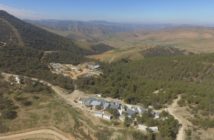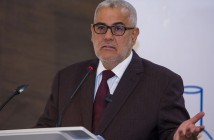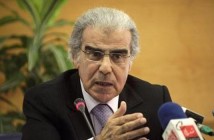There remain a myriad of barriers to ‘secure’ port investment in North Africa as Stevie Knight discovers

Port projects associated with the Suez Canal, such as Port Said's development, will not find the going as hard as other areas might
North African ports have always been subject to an array of different pulls, but the ‘Jasmine Revolution’ is still something of a wildcard despite places like Egypt and Tunisia trying very hard to bring a sense of stability.
This is despite many North African ports identifying themselves more with the southern Mediterranean economies than Africa. After all, TangerMed’s arrival was more of a sting for Algeciras and Valencia than others on the African coast and Tunis’ trade is 70% European.
As Alistair Mackie of Holman Fenwick Willan notes these facilities are very cost effective in terms of shipping, providing little in the way of a detour, lower charges than their European neighbours – and they have a lot more free land.
But it hasn’t just been geography ruling the cargo: there are a number of different links – and barriers.
While some places were already well into the embrace of private partnerships with concessions such as Tanger-Med in Morocco, and Ain Sokhna and Port Said East in Egypt, some places were slower to let the state control go and were just starting out on the transition.
Difficulties from political cross-border barriers and state imposed inefficiencies were common: these ranged from ‘standardised’ port tariffs, which didn’t take into account costs or competition, to lack of adequate legislation to allow ports the role of logistics services integrators. Algeria notably had put in place a number of draconian import-export laws designed, it seemed, to discourage any foreign investment.
Despite this, the North African area was seeing changes: developments included free trade zones as well as concessions, and just a bare eight months ago, Libya, as an oil-rich nation, was also expected to get further onto the PPP path to boost its infrastructure, following other relatively wealthy countries such as Egypt and Morocco. Mr Mackie noted that Libya at that point seemed to have come out of the cold, and though there was some hesitancy, people were at last willing to invest.
However, the revolutionary spirit has left some foreign companies counting their losses, and there is also the spectre of contracts signed with the ousted regime coming back to haunt them with irregularities now under the spotlight of international law or anti-corruption regulations. Tunisia, including the box port at Tunis, used to be seen as one of the area’s rising stars and a good way to trade into less easy-to-deal-with Libya. However, the country is now facing a future with a long list of ‘problematic’ relationships to be investigated and something between 1% growth and outright recession.
So, will the wave of unrest unseat infrastructure developments – even though both new and old regimes now badly need them?
Well, probably in the short to mid term – though any guesses at how long this will last depends on who you talk to. Firstly and fundamentally, people don’t really know who they are now dealing with… although one enterprising port industry source said that “as soon as we know who to talk to, we will start talking – there will be some very interesting deals to be had”.
‘Reconstruction’ alliances are being built on a strategic as well as commercial basis. For example, the government of Qatar is building two new facilities in Port Said and Alexandria, with over one million jobs associated with them.
Further, both the US government and the European Investment Bank (EIB) have put money into the region very recently. They both seem to see private-public partnerships as holding the potential of both carrot and stick, creating links and driving modernisation, not only mobilising capital but also helping transfer technical and managerial expertise.
The EIB has said that, “PPPs have the advantage of instilling discipline between all the project partners at every stage of the design, construction and operation of the infrastructure concerned”. However, whether the stick really has enough power to change an institutionalised view is debatable. Mr Mackie explains: “Though the idea of assisting social change by investment in ports and terminals might be seen as commendable, this doesn’t really have enough leverage to change decades of a culture that a particular regime has engendered.”
There is no doubt that recently, port operations have been in difficulty. Mr Mackie says: “The unrest has made a lot of things quite problematic, in some places key workers haven’t been able to get in… Some operations had to shut down and people were genuinely scared; whether because they have been promoting business with a regime that is rapidly going out of favour or simply because of so much armed presence, it’s not a good climate for doing business.”
He explains that the revolutions herald not just a change of government but actually a tearing up of the rule book, and changes to “the underpinning structure of the law itself. You are looking at concession of maybe 30 to 50 years: so as a basic requirement you need the rule of law to continue, but in some jurisdictions this simply may less realistic than in the past,” he says.
He adds that it is not entirely unknown for a concession simply to be taken away from an operator on a turn of government, and although it is possible, if there is a bilateral agreement in place, to take an investment claim to the Hague, “you immediately sacrifice any goodwill you might have had in the country”.
Mr Mackie goes on to say that non-mature markets on North Africa’s Mediterranean coast now have a large slice of political risk attached to them, and brokers now point to questions about the viability of insuring it – which as the risk goes up, gets progressively more prohibitive. “In some places it is simply not even worth writing the policy right now,” he concludes.
Older plans are in disarray. Egypt, for example, neatly avoided the worst of the downturn by not having much credit to crunch, seeing a steep increase in box traffic in 2010. Home to over 80m people, Egypt had a respectable GDP growth rate and was a rising market for the US which saw it as a regional hub.
This, alongside the emergence of private equity a decade ago, meant what seemed to be a healthy upward swing for the ports. The Mubarak government started some fairly major expansion projects a while ago and introduced a number of semi-private free-zones around the port areas. For example Alexandria and Dekhila ports – a twin affair handling over half of the country’s imports – had been developing a number of container, liquid and multi-purpose terminals, factories and storage facilities and at the end of last year DP World said it was looking at a new terminal at Sokhna port, at the southern end of the Suez Canal, doubling existing capacity. But all this has been thrown into disarray as both Alexandria (a PPP with Hutchison) and Sokhna have taken a big hit from the troubles.
Not all are headed in exactly the same direction. Of the developments on the table for Port Said East Port, the most reliable is now the near-completed Suez Canal Container Terminal’s Phase II, and there’s still the possibility of development for the terminal’s Phase III, 450m extension.
It seems that the deciding factor for calls in the East Med for many lines has been, according to Robert Hambleton of SCCT, down to a port’s particular profile. He explains: “The SCCT terminal is primarily transhipment – 90% of its volume isn’t bound for Egypt – and not surprisingly, lines are looking to reduce their overall unit cost.” His point is that the facility gives the lines the ability to consolidate operations, either on their own vessels or within a consortia, or again by slot chartering arrangements with other lines calling in. “It helps that we can handle the extra large ships,” he adds.
Again, TangerMed in Morocco, another large transhipment hub, hasn’t seen so much of a drop off in cargo, despite all that’s been happening. But the opening of T2 might pull the rug from volumes in the area – especially given the fall in markets to the east.
This megafacility is being presently ‘babysat’ by the state-owned operator, Morocco Marsa, and is looking for interest, but with its potential capacity of 5.5m teu, it is simply too big for any one operator to simply “go it alone”. Hartmut Goeritz of APM Terminals in TangerMed1 says: “It’s too early to say who, but I suspect it will take a combination of interested parties coming together as the investment burden for TangerMed2 is going to be very heavy.”
He adds that economic changes made for a very different environment for everyone post 2009. “The downturn was a real eye-opener, we simply hadn’t seen anything like it before, and it’s shown there’s a need to make alliances that work for everyone, especially on anything of this scale.”
However, Mr Goeritz points out that the industry is still showing a tendency to look at bigger ships, and because of this, the facilities at TangerMed at least have “pull”, given both good location and deep draught. And of course, in the slightly longer term, you can’t ignore the rest of Africa, and economies, that although turbulent, still appear to be blossoming.
Tunisia and Egypt, points out Mr Mackie, are both now working very hard at plans aimed at returning business confidence – or at least, help foreign investment stay in the game, especially as there are a number of ‘hot’ projects that do need large slices of foreign investment, like those associated with the Suez Canal – although the Suez, by virtue of its strategic importance, will probably not find the going as hard as other areas might.
Some places are not yet quite so ‘outward facing’, Algeria being one. Although DP World partnered up with the government in 2009 to get both Algiers (Djazair) and Djen Djen up and running, some say that the government didn’t do port business any favours. The idea was that Djen-Djen had the potential to handle the new generation mega-vessels with its sights on becoming a transhipment hub for the region – despite the lack of hinterland connections.
However, not long after the opening of the ports, the government implemented controversial measures concerning trade and investment. Douglas Wallace of the US Commercial Service was prompted to write, rather carefully, “Algeria is a market that requires patience and determination”, before outlining Algerian measures, such as the freezing of consumer credit and huge import/export taxes especially affecting petroleum products which effectively kneecapped foreign trade.
Both Syria and Libya, at time of writing, are an unknown quantity. Yes, there were port developments in place in Misrata to expand box handling capacity, but how long before some of the major ports can even become completely operational again is anyone’s guess. And how long before things can move on enough that foreign investment will once again be able to realistically put roots down in the area is even harder to see.
http://www.portstrategy.com/features101/area-survey/africa2/maghreb-nations/revolutionary-spirit






